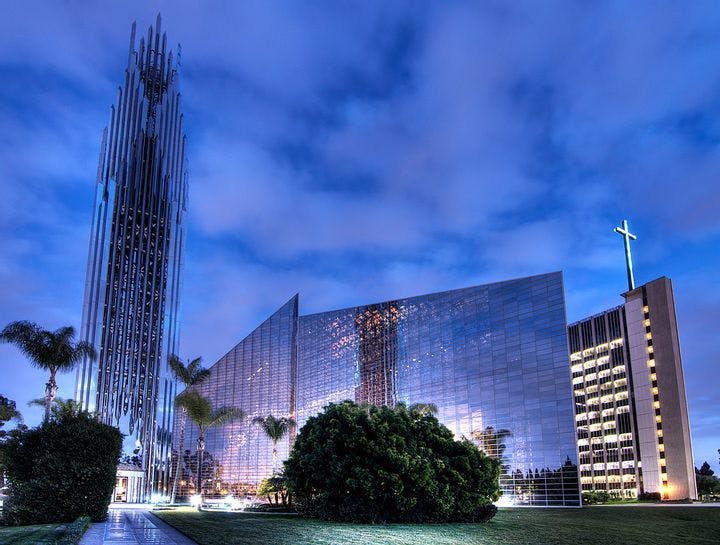Spring 2009
Postmodern Pews
– The Wilson Quarterly
There's the devil to pay when a church gets stuck with a Modernist masterpiece.
Partisans of Modernist architecture in the mid-20th century didn’t mince words, writes Matthew J. Milliner, a doctoral candidate in art history at Princeton, even when the subject was sacred buildings. Gothic churches were dismissed as a futile “fight against the forces of gravity.” Chartres Cathedral was a “sentimental” vestige of the past and St. Peter’s Basilica a “wretched failure.”
Religious architecture now should communicate a “scientific spirit,” wrote one Modernist enthusiast. Churches should forsake architectural façades, showcase new materials produced by industrialization, and be honest about a building’s structural needs. Modernism should rebel against historicism and overblown form, and should no longer pander to the rich.
But Modernist religious architecture was often a failure in the eyes of the average parishioner it was supposed to serve. Its mistake, Milliner says, was to “underestimate the needs of humans who inhabit buildings.” In spite of the human love of color and variety, Modernism offered monotonous white planes; in the face of people’s appreciation of ornamentation, Modernism preached plainness.
Modernism went from a world-saving mission to one among several furniture options on an Ikea showroom floor, Harvard sociologist Nathan Glazer wrote in From a Cause to a Style (2007). While its simplicity produced “wonderful factories,” it largely failed to inspire great religious architecture. Indeed, Modernism begat some terrible buildings. For example, in Washington, D.C., the congregation of the Third Church of Christ, Scientist is fighting a bitter battle with historic preservationists over the fate of their 1971 Brutalist-style church, which stands only three blocks from the White House. Preservationists have spurred the city to declare it a historic landmark building, but the parishioners have gone to court to overturn the ruling. They want to tear down a structure they consider unsightly, unchristian, and prohibitively expensive to maintain.
Premodern buildings often admirably serve people who worship because their architects were worshipers themselves, according to Philip Bess, head of the graduate school of architecture at Notre Dame, and author of Till We Have Built Jerusalem (2006). Churches and synagogues fail when they kowtow to architectural fashion instead of honoring the beliefs professed within their walls. Improving Christian architecture, Milliner says, could start with a renewed appreciation of the Christian tradition.
* * *
THE SOURCE: “Building for Humans” by Matthew J. Milliner, in Christian Century, March 10, 2009.
Photo courtesy of Flickr/Dave Reichert
